Who Lived in Muston in 1851?
Based on the 1851 Muston Census and 1849 Muston Tithe map.
By Sue Dunsmore
MUSTON CENSUS
A study by Sue Dunsmore, 8th August, 2008
The census took place in Mothers Day, March 30/31st, 1851
Census, according to a variety of definitions, is an official periodic count of the population. It also includes (as in the 1851 census) the number of households in the area, the name and address of each resident, the spouse or parents, date of birth, age, relationship to the Head of the Household, whether widowed, profession or occupation, and place and county of birth. Farmers also had to declare the number of acres they farmed, and details of their work force.
The aim of this research is to take a closer look into Victorian village life, using the census and the documentation of the period.
Appendices: Part of the 1949 tithe map is shown as Appendix 1 (see below), and a copy of the Muston page from White’s 1868 Gazzetteer as Appendix 10 (see below). Further information taken from the census and other sources is presented as tables in appendices 2-9 and 11-16 which are in PDF format and can be opened via the links at the base of this page. A full transcript of the Muston Census of 1851 is given as Appendix 17, also as a PDF file. All the PDF files can be opened via links at the base of this page. To do this you must have Adobe Reader or Adobe Acrobat on your computer: Adobe Reader is a free add-on that can be downloaded and installed from the Adobe website.
THE ENUMERATOR
The Enumerator was the person paid to complete/collect the Census forms of up to 130 households. He would probably send the forms out to each household, and collect them on Monday March 31st. Some residents could complete the forms themselves, but not everyone could read and write in 1851. The Padget family might not have been pleased with this disruption; their son Frank was only 2 days old.
The Enumerator does not appear to have gone too far out of the village. Grantham Canal is close by, with at least one abode, but there are no canal labourers or warfingers mentioned on the census. Mill Farm, Skerry Lane cottage and other farms dotted around the Parish itself may have been overlooked also.
IN THE FOOTSTEPS OF THE ENUMERATOR 1851
See Appendices 1, 3, 4, 5
Apart from the residents of Read’s cottage (which does not exist today), there is a complete absence of addresses for Muston. Street names did not officially materialise until well into the twentieth century. However, by examining the older buildings, looking at the names and occupations on the census, and using the tithe map of 1849, it is possible to identify some addresses of the residents. The numbers in brackets identify the location of occupants, buildings and/or land in Muston in 1849. The names highlighted lived in Muston Parish in 1849. There were however, several agricultural labourers who changed their abode each year; their addresses in 1851 can only be surmised.
The Enumerator began with the Borroughs family, known to have lived at No. 1 the Green, and then went to the Reed’s cottage (perhaps next door). He then visited Innkeeper Mary Smith, possibly at the Wheatsheaf Public House (156), or at her property (178) near Sike lane. From there he travelled to the other side of Muston, to Farmer Oliver’s Hospital farm (122), and then to the widow Hickson at the Corner Farm (125).
He crossed the road to visit the Geeson family (126), and then went round the corner to see the agricultural labourer families of William Norris, John Peach, and Henry Birch (138), living in what is described as ‘Messuage, Gardens and Close.’ Next door (137) were: William Briggs Senior with his family and lodger George Dickinson; Charles Birch and his family; Robert and Ann Geeson: a total of 13 people all sharing a house.
The Enumerator then crossed the road to three tenements where Thomas Gale and family; William Briggs Junior and family, and Henry Topps and family resided (129). It seems likely that agricultural labourer Thomas Vickerstaff and family still lived at the next farm (130), because he was a tenant farmer in 1849; widow Jane Houghton, a pauper, also lived there in what was known as ‘Messuage , Gardens, Buildings and Close’ with her four children. There were also two other families living there. Could they have been William Green and family and newly weds, Robert and Ann Harris, as they were next on the census list?
The farm on the corner was managed by Robert Cragg and family (134). Crossing the road, possibly Daniel Johnson, wife and son (135) lived at the farmhouse, as he did in 1849, but he was an agricultural labourer in 1851. It cannot be certain where widow Ann Hollingworth and her 12 year old niece Elizabeth Briggs lived, whether on what is known as Main Street today or at (48), a cottage on Skerry lane, but Elizabeth Bray lived in her cottage (146) on Main Street.
The Enumerator crossed the road to meet agricultural labourer Phillip Carter (153), and then crossed the road again to what are known as the Duke’s Cottages today (145). Widow and pauper, Hannah Elliott lived here with her family, as did William Johnson and his family; Robert Tinkler, his son Robert and their lodger, William Marston; and finally widowed pauper Ruth Gale with her son:15 people in all. Further up the main street, school mistress Ann Harmster may well have lived in the house next to the school (149) with her husband.
On the other side of the school were seven tenements (151), possibly housing John Briggs, John Challands, William Topps, Joseph Patchett, Richard Kirton, John Johnson and William Staines, together with all their families! 45 people.
The Enumerator crossed the road to where blacksmith Thomas Lord (150) and his family of nine lived, then he would visit the Rectory (160) to see the Gordon family.
After seeing the Rector he would go down Church Lane, past the Methodist chapel to further tenement housing for agricultural labourers. Plot 164 housed six families: John Gale, William Richmond, George Hodson, William Dring and John Kerton, and their families, as well as John Aukland and his wife. The next house was described as two tenements (165). Did agricultural labourers Robert Geeson and his wife, and Joseph Green and his family live here? Today there is an end house on Church Lane: did Robert Simons have his grocery business here? The Enumerator may have then crossed Church Lane to (141), a ‘Messuage, Buildings, Yard and Close’. The families of agricultural labourers William Geeslin and James Briggs probably lived here, as there is evidence of more housing on Easthorpe Lane in the past.
The Enumerator crossed Woolsthorpe Lane and visited three farms. These were occupied by Robert Spray (188), William Hoyte (187) and Thomas Oliver (186), and their families. He crossed the road again and returned to the start of Woolsthorpe Lane. It is possible that farmer Robert Tinley’s house was here (167); farmer William Leighton lived in this house in 1849. Did William Norman the grocer live in Plot (169)? Plot (168) held four tenements: possibly occupied by Joseph Patchett and his family; William and Ann Keeton; John Dring and family, and John Payling and his family. John Padget and his family lived in the house and land owned by Mrs Padget (169). Widow Hannah Caunt, who was identified on the census as a pauper, may have lived in the same house, as William Dring, identified on the tithe map, is not mentioned.
Francis Dean owned property 170 (he also owned property on Skerry lane). It is also uncertain whether agricultural labourers Daniel Leighton, Leonard Osbourn and Joseph Harbuck, and their families, lived on Francis Dean’s property, or with John Clifton, the master carpenter, whose large house abutted the Green (In the 1861 census, there are possibly 8 families, including John Clifton’s, living at this relatively big house: – the others included Daniel Leighton, Leonard Osbourn, James Briggs, John Challands, James Pollard, and John Hornbuckle and their families).
The Pollard families probably lived on the land they owned (175). Agricultural labourers William Parnham and his family, and possibly William Dring Senior, lived in the house at (177).
Mary Smith the Innkeeper owned Plot (178). Did the shoe maker John Hornbuckle and tailor Robert Pass and their families also live on her property?
The Enumerator crossed the road to Robert Padget’s farm (185). James Read and his family lived at (183); Robert Read and his family lived on Sike Lane (179), neighbours to the Calcraft families (181). Eustace Kemp and his sister lived at Muston Gorse (255).
There are no clues as to where the Kirton and Reynalds families lived, the last names on the Census, but they may have also lived at Muston Gorse.
THE POPULATION
412 people were recorded as living in Muston in 1851, compared with only 200 in 1800 and approximately 270 in 1901. This figure included 403 residents, 6 visitors and 3 lodgers. There were 129 men, 128 women, 82 boys and 73 girls in the village that particular night. There were 82 households then, compared with 72 in 1881. In 1851 half the people lived in the country and half lived in the towns. British farms could only supply two thirds of the food needed by the people.
The census does not include all Muston residents, such as Mr. More the policeman, or William Gordon, son of widower Reverend Gordon, who was aged five on the 1841 census, or, even more poignantly, the Guring family. The Guring family are mentioned both in the birth (February) and death registers (April) of 1851, but are not mentioned on the census. Presumably they were away from home on the night of the census
Muston appears to have been a busy village in 1851. There were 15 births registered that year, including 3 by single women. Six couples married; Robert Harris and Ann Birch married on February 23rd and were living in their own home. Fourteen people were buried; sadly three of these were infants, including Frank Padget.
A STUDY OF THE 1849 TITHE MAP
Lists of landowners, acreage, and rent apportionment of rent charge, identification of occupants, property and land are given in Appendices 2,3,4 and 6.
This document indicates the apportionment of the Rent Charge that was made in lieu of Tithes in the Parish of Muston. All the landowners and other interested parties would have received a copy. The biggest landowner was His Grace the Duke of Rutland, owning 1119 acres out of the 1623 acres in the Parish. Bottesford Hospital was the next largest with 296 acres. Robert Simons, Trustee, owned the smallest parcel of land – 6 perches containing the Wesleyan Chapel, which had a rent charge of 4d per year (payable to the Rector). The New Ambergate and Boston Railway Company paid an annual rent of £3.2s; initially rail journeys were afforded only by the very rich. The canal and towing paths were exempt from rent charges, made possible by a Private Act of Parliament. The document clearly details that the Reverend Gordon was entitled to £426.14s per annum at that time, about £36,000 today.
The map itself shows changes in the landscape. The A52 road today is a straight road due to the building of the Bottesford bypass in 1978. In 1849 the Grantham-Nottingham road had a meandering course and people complained about the poor state of the road even then! The Wheatsheaf Inn would have attracted customers travelling along the Grantham-Nottingham road, as it does today under its new name, The Gap. The lanes in Muston also appear different in 1849. Church Lane appears wider on the map than what is called Main Street today.There is a lane between plots 144/147 leading to the river, which cannot be seen today. Woolsthorpe Lane must have been very busy, noisy and smelly with its several farms, two grocers shops, a shoemaker, a tailor and a carpenter living on or near the lane. I have recently been informed by a local resident, that Easthorpe Lane would have been a main road for traffic from Bottesford to Woolsthorpe. The traffic would be markedly different from today, with waggoners, cows, sheep, carts, carriages, horses and pedestrians using the lane, not to mention the dairy maids! Would there have been a local market on the Green, selling farm produce, or would the farmers have gone further afield to bigger markets?
The location of farmers Robert Tinley and John Read are not exactly known, although it is probable that Robert Tinley lived on Plot 167 and John Read possibly lived on what is known as the Green today. Thomas Geeson is identified as an agricultural labourer in the census, but in the Tithe map he appears to be living in a substantial house, possibly the Stone House today, and farming approximately 15 acres of grass and arable land. Similarly, Thomas Vickerstaff is farming approximately 27 acres of land, but was classed as an agricultural labourer two years later.
What form of accommodation was there for the agricultural labourers? This is not an easy question to answer, due to the frequent movements of these workers at that time. Landowners Mary Smith and Frances Dean confuse the issue as well because there were several buildings on their properties, and it is not absolutely certain where the landowners themselves lived! However, it is known that most of the workers definitely lived in tenement housing. Old dictionary definition of tenements include: a large building containing suites of rooms usually of inferior grade, each occupied by a family; a house that is rented. Location numbers of the eighteen tenements in Muston are 129/124/160/164/137/94/151/153/145/126/138/184/179/183/165/143/14/175. They were located mostly between the farms and on the main street.
Eighteen buildings does not seem adequate housing for all the working population, and there are other types of housing in the village. For instance, certain buildings may not be indicated to have been “tenement” but are known to have been the abode of workers: for example 175 – William Pollard house and garden; 137 – William Briggs and two others.
‘Messuage’ is an old word for a dwelling house with its outbuildings and land. Jane Houghton and three others lived in messuage number 130, and this included buildings, grass and arable lands amounting to 1 acre, 2 roods and 19 perches; this land had a rent charge of 15 shillings a year. Jane is identified as the Occupier and must have been a widow in 1849, yet in 3 years time she would be a pauper. Other Messuage numbers include 170 (owned by Mary Smith), 138 (owned by Robert Simons and occupied by William Norris and two others), number 173 owned by John Clifton, 169 owned by Mrs Padget and lived in by agricultural labourer John Padget, and number 141. Drawings of the period show buildings with thatched roofs.
The Tithe Map also details 48 gardens, mainly rented by the agricultural labourers. The rent charge started from 4d (see Appendices).
The population of Muston was double the population of today, but the tithe map indicates dramatically fewer houses in a smaller area.
When comparing the Census and the Tithe Map, it can often be observed that several residents have become less affluent in a short time period. Therefore, is it safe to presume that they would continue to be living at the same address in 1851?
OCCUPATIONS AND PROFESSIONS
The Farmers: See Appendix 8
Farming was the main source of employment in 1851. There were 11 farmers locally though only Thomas Oliver owned his farm. The Post Office Directory of 1855 confirms the information on the 1851 census.
The Irish Famine in 1846 is well documented; less well known is the harvest failures in this country. In 1849 there were 14 farms and in 1881 this would be reduced further to 8 farms, as the price of imported corn was much cheaper and the Industrial Revolution increasingly tempted more workers from the land into the towns and cities.
The 1849 Tithe Map identifies wheat, barley and oats and their prices. In 1891, Kelly’s Directory identifies wheat, barley, beans and peas as the main crops grown in Muston Parish.
All the plots of land are identified by name and number on the Tithe map of 1849. Some lands have interesting names such as ‘Hovel Regard’, ‘Hunt Cliff’, ‘Running Furrow’ and ‘Scalding Furlong’.
John Oliver was a tenant farmer for Bottesford Hospital; he lived at the Hospital Farm, built in the early C17 and a listed building today. A large barn, possibly a Tithe Barn, was built in 1807 and can still be seen today. He had 32 plots of land to manage, ranging from No. 1 in the corner of the Long Bennington Grange/Normanton Manor; Plot No. 141 on Church Lane; No. 51 near Allington parish boundary and No. 113, near Easthorpe Manor. It does appear a large area to manage, but there are buildings, a cottage farm, and messuage in areas No. 47 and No. 141, which may have housed some workers. He appears to have been the largest employer. William Tinkler was his shepherd, and 18 year old James Furmage was his waggoner. It would appear from his high acreage, servants and abode that he was a successful farmer. John Oliver died in 1870, aged 64.
Eustace Kemp farmed 3 fields (223, 255 and 256) abutting the Grantham Canal, near to his farm at Muston Gorse. It was grass land and the landowners were the Croxton Poor. He also rented plots of land from the Duke of Rutland; Nos. 246-254 were arable lands south of the Grantham Canal and close to the farm. The lands in this area have the word “Gorse” in their individual titles. Eustace was aged 21 at the time of the census, and nothing further is heard of this family, although a later census would identify his abode as Kemp’s Farm.
Robert Cragg was a tenant farmer for the Duke of Rutland, with 23 plots of land to farm and the third highest acreage.. He also had a large area to manage; there is a cottage (no.41) and farm buildings (no. 40) which may have housed farm workers. His lands started at No.4 in the corner of the area near Long Bennington Grange and Normanton Manor. Plots Nos. 33-45 were around Normanton Manor, and down to Easthorpe Manor (No.110). A large grass field (No. 133) adjoins his farm. He employed 19 year old Elizabeth Gerson as his dairy maid, indicating that he had a herd of cows. Dairy maids would have sold milk from house to house, and made butter and cheese for market. William Briggs was a servant-waggoner. Robert was aged 43 at the time of the census; the Cragg name is not mentioned in the 1881 census.
Elizabeth Hickson, aged 58, was a tenant farmer for the Duke of Rutland and had 14 pieces of land to farm, mostly arable land. Plot Nos. 74-76 were near Normanton Manor. Nos. 95-103 were located on the outskirts of Bottesford, between Grantham Road and the railway line and over the railway line. Plot No.108 was south of Grantham Road, opposite Plot No.95. There is no further mention of the Hickson family as farmers, and they are not mentioned in the 1881 census.
William Hoyte was tenant farmer for the Duke of Rutland. His lands included plots 115 and 116 on Easthorpe lane, and No. 152 in the village opposite the Glebe. The rest of his lands lay behind his farmhouse, stretching in a long corridor towards Easthorpe Manor. William Hoyte died at the grand old age of 75 years.
Thomas Oliver was a tenant farmer to the Duke of Rutland in 1849. He had lands along Skerry Lane; two fields on Easthorpe Lane and lands at the back of his farmhouse, in similar pattern to William Hoyte. He was Church Warden in Muston in 1851 and served for many years. He retired from farming; in the 1881 census, his sons Robert and Joseph were both farm labourers, and son William was a servant gardener. Another son Edward could possibly have been a local grocer, but there are discrepancies in their birth dates. This family appears to demonstrate the decline of the farming families in the latter half of the 19th Century.
Robert Padget, aged 46 years, was a tenant farmer to the Duke of Rutland and had 13 pieces of land, including two fields on Easthorpe Lane, and abutting the Canal Lane area. He is not mentioned in the 1881 census, but his nephew, Henry, a waggoner, married, had five children and in the 1881 census was an agricultural labourer.
John Read, aged 55 years, was a tenant farmer to the Duke of Rutland, and had small strips of land near Long Bennington Grange. There is no further mention in the 1881 census of the Reads as farmers.
Robert Spray, aged 67 years, was a tenant farmer to the Duke of Rutland and had the second highest acreage. Plots 189-203 were large adjacent fields near his farmhouse on Easthorpe lane. He also farmed near Grantham Road. He employed 16 year old Mary Topps as his dairy maid and 32 year old William Topps as his shepherd. His grandsons Boyfield and Robert Padget continued farming, as reported in the 1868 Leicester and Rutland Gazetteer. There is a plaque identifying Spray Farm on Woolsthorpe Lane.
In 1849, the Calcraft family were tenants of the Duke of Rutland but only farmed approximately 5 acres of land. By 1851 Elizabeth Calcraft, aged 62 years, was farming 33 acres, near their farm on Syke Lane. Her son, William, and his descendants carried on the farming tradition for nearly 150 years.
Robert Tinley, aged 22 years, is not mentioned on the 1849 tithe map, but could have been the cottager from Normanton mentioned in Hagars & Co’s Commercial Directory in 1849. His position in the 1851 census indicates that he may have lived on Woolsthorpe Lane. He farmed 43 acres. Sadly, his two children, Robert Henry and Sarah Elizabeth both died in infancy, and Robert himself died in 1860, aged 32. His wife Elizabeth continued farming, and is mentioned in the 1868 Directory as a farmer.
Farmers with large land acreage, workforce and servants do appear affluent. Farmers with much smaller farms were in a more fragile position; they would still have had to pay rent to the landowner after a bad harvest. This is possibly why some residents, such as Thomas Vickerstaff, show changes in their occupations, from farmer to agricultural labourer, and vice versa.
The Agricultural Labourer:
see Appendices 6,14
There were 73 agricultural labourers recorded on the census, but only 34 men and six boys were employed by the local farmers. This implies that 43 men had to travel longer distances to reach their place of work outside of the parish. One imagines that the footpaths of Muston were well used! However, it is not recorded in the census whether Mary Smith or Francis Dean employed agricultural labourers, as they did not declare themselves as farmers. The Rector’s Glebe land also amounted to over 27 acres in 1849; he is not understandably identified on the census as a farmer, but would have required managers/labourers for his land. Another possibility is that at least four farms were discontinued between 1849 –1851. There is also evidence to suggest that this is a period of hard times for some Muston residents, possibly caused by the reduction in farms and poor harvests. William Staines was a butcher and cottager in 1849, but is an agricultural labourer in 1851. Thomas Vickerstaff is a farmer in 1849, but an agricultural labourer in 1851.
A previous rector George Crabbe (1780-1841) highlighted the hardship of village life in his poetry, and various other accounts also describe the harsh living conditions of the agricultural labourer in the nineteenth century; the annual Hiring Fairs, the long working hours, the heavy manual work, living below the poverty line. There was no security of tenure, and no retirement pension. No work meant no pay.
An agricultural labourers wage in 1851 has been estimated at 10 shillings a week, about £42 in today’s values. By 1901 this was estimated at 14/11d per week, about £58. The widows Hannah Elliott, Ruth Gale and Hannah Caunt were wives of agricultural labourers and were registered as paupers. George Dickinson must have been very fit to have continued working at 88 years old. There are no retired agricultural labourers on the census!
There is evidence to suggest that some agricultural labourers also had other jobs to supplement their meagre earnings. The 1851 Church Warden Account Book and Directories of the period highlight this fact. George Dickenson and Robert Tinkler both receive salaries from the church. Robert Tinkler, who would eventually become the Parish Clerk and Sexton, also received three shillings per annum for cleaning the church, four shillings per annum for washing surplice, and two shillings for oils for the bells for the year. John Johnson was paid six pennies for coals. Joseph Challands was paid 15s 9d “as for bill”. Agricultural labourer John Read was perhaps more fortunate; his grey slate gravestone in Muston churchyard records that he died at the Bede House in Bottesford in 1885.
There are also several gardens rented by these workers, often where more modern housing is situated today. Many of the gardens were rented by workers who did not leave Muston, and on behalf of other labourers, for example ‘William Briggs and 13 others, cottage gardens; ‘Daniel Leighton and 8 others – cottage gardens’.
A child’s place of birth can give an indication of an agricultural labourer’s movements and his changes in employment. Joseph Green, for example, was born in Easthorpe and his wife was born in Spalding. Their firstborn daughter Sarah was born in Sedgebrook. One year later a daughter Mary was born in East Allington, and 2 years later, a son William is born in Muston. The Census seems to show that Joseph moved house 3 times in 4 years in order to be where his work was.
The numbers of agricultural labourers would decrease over the years. The 1901 Census would show only 9 agricultural labourers and farm workers in a more skilled capacity. A threshing machine driver, teamster and cow man are mentioned. A larger number of men would be employed in the ironstone industry.
Waggoners are mentioned 5 times on the census, but were usually classed as servants on the farms rather than separate businesses. The named waggoners not already mentioned were William Johnson, aged 23, and John Challands, aged 21.
There were four farmer’s sons employed on the land. These were Robert Spray, aged 23, Robert Oliver, aged 19, John Calcraft, aged 25, and William Calcraft, aged 31 years.
Robert Tinkler, an agriculatural labourer
Robert Tinkler must be mentioned here, because he is one of the few people identified on the directories, census and various registers in the C19 and there is also a photograph of him and his wife.
Robert was born in 1829, the son of Robert Tinkler, an agricultural labourer, in Muston. He probably attended the Free school in 1841, because he learnt to read and write. In 1849 his father is mentioned on the tithe map, probably occupying one of what is known as Duke’s Cottages. Robert senior also rented a garden close by on Plot 147, with an annual rent charge of 1s 10d.
In 1851, Robert junior is 22 and living with his father and also a lodger, William Marston. Robert is also mentioned on the Church Wardens register, as previously stated. In 1868, Robert Tinkler is Clerk and Sexton of Muston at the age of 39 years; this is documented in the Leicester and Rutland Gazette. By 1881, Robert is 53, married to Adeliza, and they have six children; Edward, aged 23, born in 1858 is also an agricultural labourer; John is 10, George is 7, Eliza is 12, Alice is 5 and Ada, born in 1878 is 3 years old.
Kelly’s Directory of 1891 identifies Robert as the Parish Clerk. The 1891 Census shows Robert (probably) and Adeliza, with their sons, George and John, both agricultural labourers, and sister Ada at home. A Sarah Tinkler is also mentioned, the same age as Ada, but this may be an Enumerator error. The 1901 census reveals Robert, now 72 years old and Adeliza, 69, living with George 27 and Ada 24, at home. Robert and Adeliza died in 1908, within 5 days of each other.
Servants:
Servants were the second source of employment in Muston. The name encompasses agricultural/farm servants, domestic servants and maids. There were 32 servants on the census, 14 men and boys and 18 women and girls. On the whole, men were usually employed as farm servants and women as house servants, with a few exceptions. The Rev. George Gordon, whose household included five adult family members, had most servants. These were a housekeeper, Mary Ann Sandall, aged 48 years (born in Collingham, Nottinghamshire) and four house servants, none of whom were born in Muston. Thomas Reynalds aged 21 years was a male house servant. Could he have had a combined butler/valet role in this wealthy family?
All the farmers bar Elizabeth Calcraft employed a house servant. Farmer Robert Tinley employed George Shur age 16 years and Lucy Read age 16 years as his house servants. Farmer Robert Padget employed Sarah Ayre as his housekeeper and, in addition, Mary Ann Hornbuckle, aged 9 years, Samuel Richman, aged 12 years and Thomas Green, aged 18 years, who were his house servants, looking after Robert and his nephew Henry Norman. The Innkeeper Mary Smith employed a house servant Susan Lee aged 19 years. Grocer Robert Simon employed Esther Lord aged 14 years.
Housekeepers:
There were 5 housekeepers in Muston and not all were widows! Farmer William Hoyte’s 66 year old unmarried sister Mary kept house for him and his niece Elizabeth, with the help of one house servant. As explained above, the Rev. George Gordon and Robert Padget employed housekeepers. Agricultural labourer Robert Read’s daughter, Mary Read, aged 22 years, was a housekeeper. His wife is not mentioned on the census, but he had three children under the age of 10 years and Mary would have been needed at home. Farmer Eustace Kemp’s sister Sarah, aged 18, kept house for him.
Railway occupations:
In 1850 the railway (Grantham/Nottingham line) was opened. Robert Harris, aged 31, born in Sussex and John Wooley, aged 25 from Rutland, were railway labourers. In 30 years time there would be 8 workers from Muston in more skilled railway work, such as plate layers and signalmen. The Belvoir Castle Tramway was opened in 1815. It was a horse drawn railway from the canal at Muston Gorse to Belvoir Castle, and lasted until 1915, but no Muston workers were employed on it in 1851.
Road labourer:
Richard Kirton from Denton, aged 61, was employed as a road labourer. Until 1876 the Nottingham- Grantham road was a turnpike. In 1881 road labourers would become known as highway labourers!
The role of women
A woman’s occupation/profession is not usually mentioned in this census. Most women’s roles were that of wives and mothers or governesses. It was only when the male head of the house had gone, that a woman might find herself, out of necessity, in a position of authority. Widows Elizabeth Hickson and Elizabeth Calcraft became farmers. Mary Smith, another widow, became the Inn Keeper with her sons and daughter in support. She actually owned the land on which the Wheatsheaf Inn was situated, and was the only female landowner in 1849 apart from Mrs Padget who owned a mere 10 perches. Hagar & Co list her as a farmer in 1849. The school had a female schoolteacher, Ann Harmster. Lucy More is mentioned as the policeman’s wife, which would have been a modern profession (where did Constable More work and what crimes did he have to deal with?). Cecilia Monkton was a governess. The Rector’s daughters, Elizabeth Gordon, aged 20, and Katherine Gordon, aged 19, did not need to work. Sarah Green, aged 20, earned her living as a laundress. Apart from these women and the two dairy maids, most women in employment were housekeepers(5) and house servants(18).
Trades and service providers
The majority of Muston residents were poor, but there was a need for services in an agricultural community. The blacksmith Thomas Lord and son William, aged 19, would have been very busy as horses were essential for work and transport. The Lord family are identified on the 1849 Tithe Map as blackmiths and continued their trade throughout the century. William is last mentioned in 1891 as a blacksmith. The Smithy continued to be worked well into the C20, and today has been renovated and is the Old Forge Tearooms.
The village had two master grocers. Robert Simon, aged 62 years, and his wife Lucy, were both born in Muston and Robert was also a small Landowner. Robert died in 1868, aged 80; Lucy died in 1875, at the age of 84. Master Grocer William Norman, aged 50, from London, was married to Muston- born Mary, also aged 50. William is listed as a baker and shopkeeper in the 1849 Directory.
Mary Smith’s son William, aged 23, was a master joiner. John Clifton, a Mustonian, aged 61, and Robert his son, aged 29, were carpenters. His other son John lived in Muston all his life, as an agricultural labourer and cottager. John Hornbuckle, 39, from Welby in Lincolnshire, was a master shoemaker, with his son Thomas, age 16, an apprentice shoemaker. Thomas appears in the 1861 census as a master shoemaker, with his 11 year old brother as his apprentice.
Robert Pass , aged 55, from Redmile, was the village tailor; his son Alfred aged19 was his apprentice. Alfred would marry Thomas Vickerstaff’s daughter, Eliza. Alfred is last seen in the 1881 census and Eliza would become housekeeper for her brother John, a farmer.
The Schoolmistress’s husband, Thomas Harmster, aged 36, was the local groom. Farmer Elizabeth Hickson’s son, 35 years old William Hickson, was a master maltster, employing two men.
As the C19 progressed, and the population decreased, there does not appear to be a great demand for some service providers, and the community could no longer sustain a shoemaker, carpenter and eventually a tailor.
The Gentry
Francis Dean, aged 65, born in Lambeth St. Mary’s, described himself as a ‘small landed proprietor’ on the census. He is described in Hagar’s Directory as a member of the gentry. The Tithe Map, in 1849, recorded that he owned over 14 acres of land, plot numbers 170/2/48 and 49. It is uncertain as to his address, because there are several properties involved. Plot number 48 seems the most appropriate; Victoria Cottage, with buildings, yard and close in the quieter area of Skerry Lane. Surprisingly he does not appear to have employed house servants, or labourers for his lands. His house servants may have been away on census night. His nephew and niece, George and Alice Dean, lived with him and his wife Ann, aged 79 years. George, aged 25, is described as an agricultural labourer. Francis died shortly after the census, in May 1851.
Reverend George Gordon MA, Rector of Muston Parish, 1821-1872
See Appendix 17
According to the Muston Church brochure, George Gordon, son of the Dean of Lincoln, was a keen huntsman who rode with the Belvoir Hounds. It is recorded that he was responsible for rebuilding the rectory, known as Glebe House, which is a private house today. He appears to have been a conscientious Rector, in that his name appears on all the Births, Marriages and Death Registers of 1851. He paid for the schoolmistress’s salary and books for the children. He also funded an annual supper for all Muston men over the age of 50. The small St. John the Baptist church must have been full to overflowing at times, given the large population, but like his predecessor, George Crabbe, he may have had problems with his Methodist neighbours. George Gordon was a permanent, steady figure in a constantly changing village society. He was Rector of Muston for over 50 years. It must have been a lonely and stressful vocation; Frances Dean died in 1851, and the farmers were his church wardens. Who were his social peers?
Visitor and Lodgers
There were six visitors and three lodgers mentioned in the census. Joseph Young, age 43, a widower and agricultural labourer, was visiting agricultural labourer’s widow Elizabeth Bray that night. The Tithe Map of 1849 shows Elizabeth occupying approximately 6acres of land and a Robert Young occupying over 75 acres of land. It may be that Joseph was a relative of Robert, and that both families knew each other in more affluent times. Perhaps Elizabeth was Joseph’s sister.
Children
See Appendices 11,17
The Birth and Death Registers show a high rate of infant mortality in 1851. No doctors or midwives were recorded on the census, and most residents could not have afforded their services. Everyone used the river Devon for drinking water.
In the Marriage Register in 1851, some grooms could not write their names, and made their mark instead. In 1841 a Free School was established by the Duke of Rutland on the main street, near the church. There are 43 scholars identified on the Census. Mrs Ann Harmster was the school mistress in 1851. There is no evidence in the Census to suggest that she had assistance in her work! The Newcastle Commission 1858 found that 1 child in 7 attended school in England, and this was felt to be a marvellous achievement! The majority of children did not attend school. Fifty children (24 girls: 26 boys) between 5 and 12 years of age stayed at home, probably in alternative employment.
Examples:
George Boroughs, aged 9, Employed on the land
William Houghton (son of Pauper Jane Houghton), age 12, Farm Servant
Sarah Read, age 10, Farm Servant
Mary Hornbuckle, age 9, House servant
Joseph Bullimore, age 12, Farm Servant
In the 1851 Census there were 10 children under the age of 14 years (7 boys and 3 girls) who were in employment. While the employment of children, often in long hours of manual labour, may seem harsh today, their income may have been necessary for the family’s survival. Those children living away from home, moreover, would be receiving their board and lodging, and perhaps training for a future occupation. They would be less of a burden on their family and ease the overcrowded accommodation at home.
The children of agricultural labourers were the least likely to attend school. Blacksmith William Lord sent one daughter to school, while Alice, age 10 and George, age 7, stayed at home. Likewise John Hornbuckle, the shoemaker, sent one son to school and one son stayed at home. Three of the farmers did not send all their children to school. Children were in high demand at harvest time, and there are records of their importance in bird scaring, farmyard work and gleaning. The five children of farm-owner Thomas Oliver were fortunate to be taught at home by a governess, widow Cecilia Monkton.
Few children appear to spend their teens in education. Thomas Topps, son of an agricultural labourer, and Thomas Oliver age 15, were the oldest scholars. Mary Dring, aged 2, is recorded as a scholar. Was this an Enumerator error or was Mary a child genius?
It could be assumed that schooling was not considered essential for children, or that the children were needed to supplement the family income, helping on the farms. Education did not fill an empty stomach!
In 1875, after the 1870 Forster Education Act, a new and larger school was built on the site of the old school, mainly at the expense of the Duke of Rutland. Schooling was to become compulsory and larger accommodation was necessary in order to admit more children.
Children’s names
William was the most common name for a boy, followed closely by John, George and Thomas. Sarah was by far the most popular name for a girl, followed by Mary and Ann. Fifty per cent of families followed the custom of naming a child after a parent.
Age and the Census
See Appendices 11,12,13
The oldest man in the village in 1851 was 88 year old widower, George Dickinson, who lodged with the Briggs family. The oldest woman was Ann Dean, the wife of a small landed proprietor, aged 79 years. There does appear to be a high number of deaths in 1851, 14 in all. Eight of the people who died were aged between 61-79 years, three were infants, and three were aged between10 and 32 years. Infectious diseases and cholera were prevalent.
Seven children were born in 1851 in the months prior to the census. Ellen Geeson, Betsey Green, John Johnson, John Topps, Ann Patchett, and Frank Padget were all the offspring of agricultural labourers; Lucy More’s father was a policeman, and George Tinley’s was a farmer. Frank Padget was only two days old on census day and sadly died that same year, as did Ann Padget (?Ann Patchett) and infant Charles Birch. It must have been a testing time for Muston’s Rector.
How big were families in 1851?
Farmer Thomas Oliver and his wife Ann had 8 children, and several families had between 5 and 6 children living at home. Older children might already have left home, while more children could still be born, so that the census cannot tell us total family size. Out of the 64 Muston families surveyed, there was an average of 3 children per household. There were 12 families who also had grandchildren living with them. Households appeared to be larger then, with Farmers Robert Spray and Thomas Oliver each having 13 residents. Robert Spray, his son, grandchildren, a visitor, and six servants made up his household. Thomas Oliver had his wife, mother in law, eight children, a governess, and servant at his home.
Agricultural labourers homes were much smaller, of course; Henry Topps, John Challands, William Topps, Joseph Patchett and John Kerton had the biggest families with eight family members.
Village stability/movement
See Appendix 11
Agricultural labourers were the largest work force in the village and it could be assumed that there would be a lot of movement as families moved in and out of the village each year. 236 people were born in Muston, which represented over half the population at that time. However, out of 82 households only four households had the distinction of all being born and bred in Muston! Robert Simon, the master grocer, his wife Lucy and servant Esther Lord were all born in Muston. Surprisingly agricultural labourer, John Padget, aged 30, his wife Elizabeth, and 4 sons, all under 10 years were born in the village. Hannah Caunt, aged 67 was born in Muston. Was she moved to Muston because she was a pauper? Robert Read the 47 year old agricultural labourer, his 22 year old daughter and 3 siblings were Mustonians. Were the Reads and the Padgets related to the farmers of the same name, and did their support keep the families in the village?
The birth register when compared with the census highlights the movement of families in this period. The Muston Register identifies seven births from January to March 1851, but not Lucy More, John Johnson and Ellen Geeson. These families moved into Muston prior to census night. Likewise, Mary Jane Hodson, Charles Birch, Ellen Guring and their families appeared to have left Muston before Census night.
Family names
There were four households with the surname Briggs. There were three households each with the names of Geeson, Green, Read, and Johnson. There were 20 people with the name of Briggs, and 16 people with the name of Topps.
There were some interesting names, such as Tryphena Geeslin, who was born in Wareham in Dorset, and married to William, an agricultural labourer born in Muston. Eley Patchett was the 33 year old daughter in law of agricultural labourer Joseph Patchett, and was born in Roseby, Lincolnshire.
Paupers
“Pauper” is an old fashioned name for an extremely poor person and/or a person supported by public charity. There are five paupers mentioned in the census, all women, all the widows of agricultural labourers. Thirty nine year old Jane Houghton has three sons and a daughter. Her oldest son, William, 12, is in ‘farm service’, but the younger three children, aged from three to eight, are supported by the parish relief given to their mother. Three of the pauper widows live with their son’s or daughter’s families: only one, 67 year old Hannah Caunt, lives alone.
“In the year 1683 Robert Cragg gave to John Cragg all his free land in Muston to him and his heirs reserving 5 shillings a year out of the said lands to be paid to 5 poor widows or to 5 of the poorest people in the town 1 shilling apiece by the said John Cragg and his heirs yearly upon St. Thomas’s day” Written on a board in the Vestry of St. John the Baptist Church, Muston. Did Widows and paupers Elizabeth Peach, Jane Houghton, Hannah Elliott, Ruth Gale and Hannah Caunt receive their shilling?
The Methodist Church
See Appendix 3
In 1803 a Free Methodist church was built, according to Hagar & Co Directory in 1849, but its location is not known. The Tithe Map of 1849, identifies Robert Simon, master grocer, as a small landowner and Trustee for the Wesleyan Society, and that the Methodist chapel is situated on Church Lane. He would not have been responsible for the earlier building as he would have only been12 years old at that time! There is no Methodist Minister on the census, but the Parishioners had a Circuit Preacher. In 1887 the latest Chapel was built and there is a crumbling stone plaque lying at its base, stating “1887-UNITED FREE CHURCH”. Older village residents remember attending the Sunday school and recall the stone plaque sited above the doorway, where there is now a window . At the side of the building is one of 3 foundation stones, stating “This Foundation Stone was laid by Mary Cobley of Leicester September 1887 To the Glory of God.” The Chapel is now a private house.
Muston graveyard
See Appendix 16
The grey slate gravestones of the C19 and early C20 have stories to tell. Most labourers of course, could not have afforded a gravestone, but the Rector has a stone near the rectory gate; the farmers and many service providers, such as the blacksmith, the tailor, and the shopkeepers are there, and a few labourers such as Robert Tinkler.
We take it for granted today that the children will outlive their parents. Many parents on this census would have experienced the loss of at least one child. Thomas and Ellen Geeson lost their son and daughter in their twenties. Robert Tinley’s children died in infancy. Death was a constant presence and the Passing Bell was heavily used in 1851.
Problems of census in 1851
Any census is reliant upon the householder’s good memory and honesty, the Enumerators interpretation/guesswork of details, and correct transcription of the forms. Many residents could not remember the year of their birth; the 1861 census would approximate the date. For example: Thomas Oliver was born in 1808 in the 1851 census, but “about 1809” in 1861. His son, Robert’s year of birth is 1832 in 1851, and about 1834 in 1861.
The surnames, Patchett/Padget are similar and could be interchangeable. Infant Ann Patchett is on the census in 1851, but 3 month old Ann Padget is on the Death Register in 1851. While the handwriting on this census is generally clear, there are times when it is difficult to interpret.
There were a lot of labourers in the village. Did the Enumerator presume that because they lived in tenements, ergo, they must be labourers? Were the agricultural labourers advised not to mention their other jobs? Hagar & Co. indicate that some were cottagers and the Tithe Map shows that most householders had rented gardens.
The Enumerator does not seem to have gone far from the village; there are several houses in the Parish itself, but not in the village.
APPENDICES
All as PDF files except for appendices 1, 10 and 18.
- Tithe Map (image displayed above)
- The Apportionment of the Rent Charge in Lieu of Tithes in the Parish of Muston, 1849
- Landowners, Occupiers, Buildings, Land Measurement and Rent Charge in Muston, 1849
- Comparing Tithe map / census1851, identifying Residents addresses in 1849 and 1851
- Muston 1851 census, highlighting where some residents lived in 1849
- Rented gardens in Muston Parish, 1849
- Summary of Landowners in Muston Parish, 1849
- Details of Farmers and Farms in Muston, 1849/1851
- Hagar & Co’s Commercial Directory of Leicestershire in 1849 – Comparisons with the Tithe map and 1851 census
- History, Gazetteer, and Directory of the Counties of Leicester and Rutland, 1868 (image displayed above)
- Baptisms solemnized in the Parish of Muston, 1851
- Muston Marriages, 1851
- Muston Deaths, 1851
- Disbursements of Thomas Oliver, Church Warden, 1851
- Census Comparisons of Muston Families, 1851/1881
- Gravestones in Muston Churchyard
- Muston census 1851
- A brief History of Muston – booklet located in St John the Baptist Church, Muston

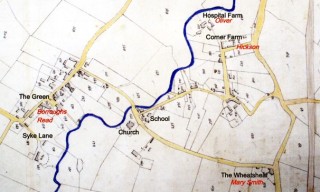
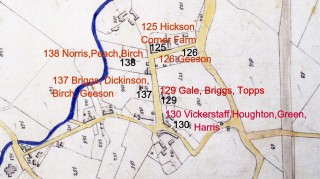
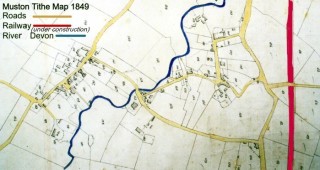
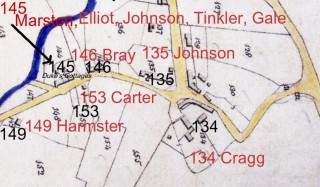
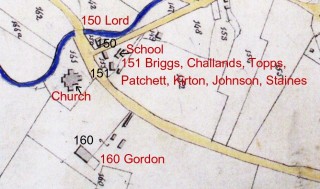
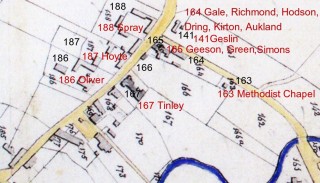
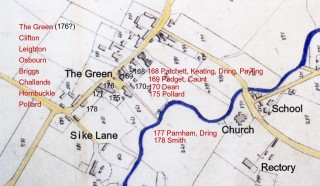
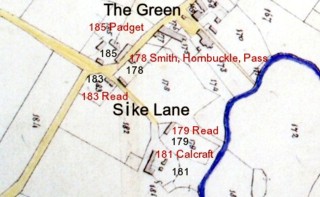

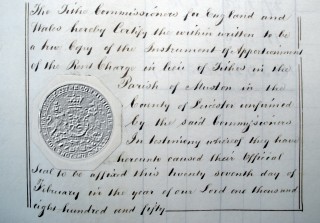
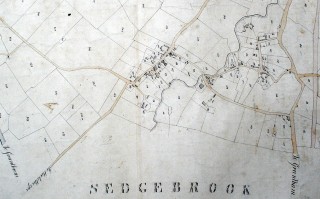



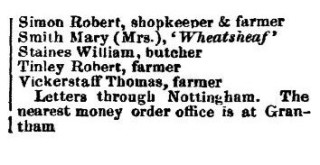
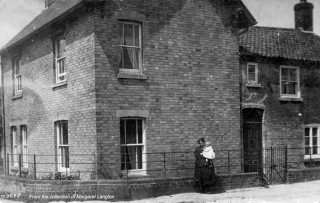
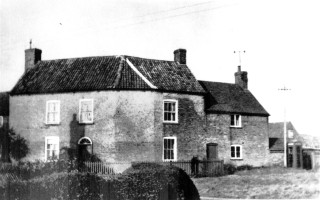
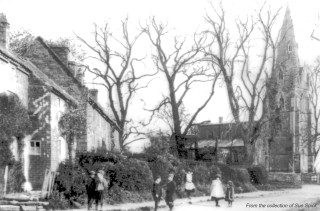
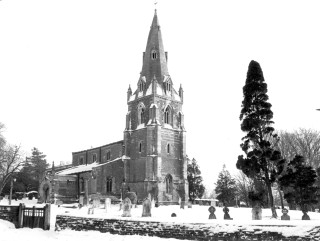
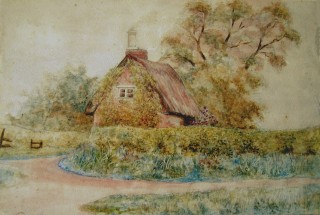
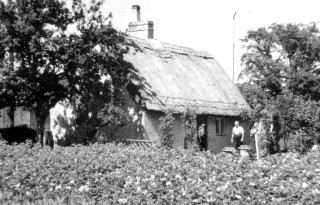

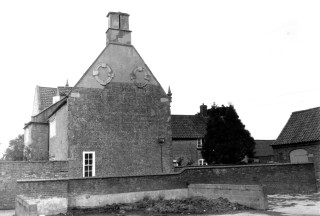








Comments about this page
What an amazing piece of work on Muston. I have barely had time to digest it, but it is certainly something I will take more time to study! Congratulations on your research and perseverency. Carole Crooke Glebe House Muston 1981 – present day
Fascinating information! I am related to the Brays (Grandmother’s name by birth, married Walter Coy) and the Topps family. Have many happy memories of the village from the 1960’s to the present day as I often drop in with my parents to look around the church.
Thank you so much for your brilliant research! I have a fascinating mathematical exercise book which belonged to Boyfield Padget in 1779. His name is scribbled all over it and the exercises are very detailed and very relevant for a future farmer. Have you any records of when he was born?
Hello Marion, According to Muston parish records Boyfield Padgit was born on 20th July 1766 – note that his surname is mis-spelt in the records. His father was Robert Padget and his mother was Mary Padget. He was married on May 20th, 1800 to Alice Scoffield. Unfortunately, I have not found his date of burial – perhaps he died in another parish. Does this information fit in with your family researches? Best wishes, Neil Fortey.
A fantastic resource! My mother was born a Patchett, a descendant of the Patchett brothers who emigrated to New Zealand in the 1870s. I’ve been lucky enough to visit Muston on a number of occasions and your brilliant piece of work has added to my understanding of my ancestors and their lives. Thank you!
A fascinating article which has given me a great insight as to where my ancestors the Kirton’s lived in the village. I recently visited Muston whilst researching my family tree and traced the enumerator’s steps. Upon reaching the graveyard however I was unable to locate the stone near the rector’s gate referred to in this article. Could you tell me more precisely its whereabouts? Thank you!
Dear Tina, Thanks for raising this question. On re-reading the article, it is not completely clear what it means when it says the Rector has a stone by the rectory gate. I would assume it meant that the Rector George Gordon has a tomb stone close to the rectory gate. Then the second part of the same sentence would seem to say that farmers and ‘service providers’ also have stones in the graveyard, as do some of the labourers including Robert Tinkler. I will mention the question to Sue Dunsmore, and also find time to go over and have another look for myself and see what can be found, then hopefully the matter can be cleared up. With best wishes, Neil Fortey.
Ann Padget married Thomas Stafford 29th July, 1784, and her Father, Robert, attended at the Parish Church, Muston. Their youngest daughter, Catherine, is my Gt Grandmother, and they lived mainly at Long Bennington. Thomas was a Surgeon and died in 1826, in Lincoln. I wonder if Boyfield could be her brother?
Fascinating and thank you. I wish I had this when I visited Muston some years ago. My mother was a Patchett whose father Israel came out with his parents Charles and Mary Jane (Hodson) and their extended family in 1876/7.
Charles’ father was John Patchett, his mother Elizabeth Dring.
This makes fascinsting reading to someone who moved to Muston two years ago and now looks after the graveyard. So many of those names mentioned are very familiar. The most stately grave is that of Arabella Anne Ashton in the very corner nearest The Glebe. She died in 1841 and is one of eleven children of the Ashton family of Hough on the Hill, Linc’s. We are trying to find out why she came to Muston as her mothers ancestors ( Southworth ) were a major family with the Pilgrim Fathers in Clarborough North Notts. Could she have been a governess at the rectory – Glebe. Fascinating
I’d like to say a big Thank you for this wonderfully presented article on Muston. Hannah Caunt (Mentioned on the census records) is my 4 x Great Grandmother. Her parents, Thomas & Ann Hickman are buried in Muston, as are her husband Williams parents and Grandparent.. I hope to be able to visit one day soon.
Add a comment about this page